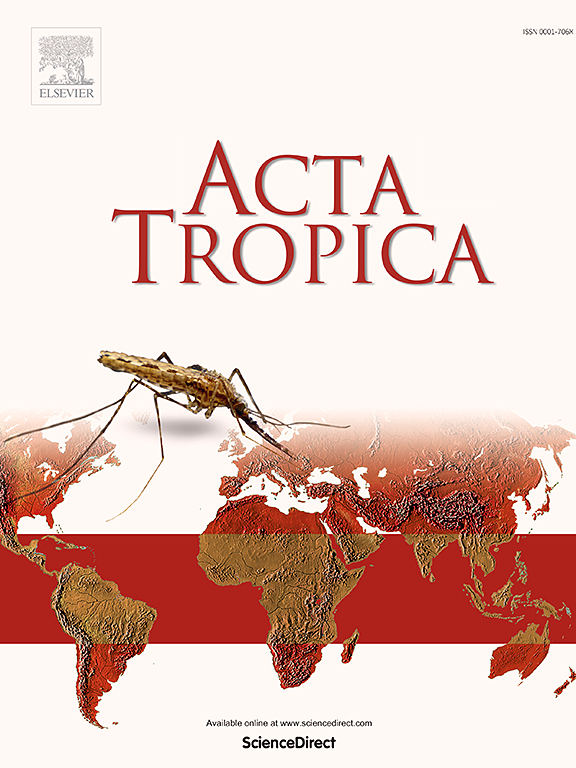DNA barcoding and host blood meal identification of Culicoides Latreille (Diptera, Ceratopogonidae) from Malaysia
IF 2.1
3区 医学
Q2 PARASITOLOGY
引用次数: 0
Abstract
Mitochondrial cytochrome oxidase I (COI) sequences were used to determine the genetic diversity and species identification efficacy of Culicoides from Malaysia. In total, 100 COI sequences were obtained from 13 morphologically identified species. Intraspecific genetic divergence varied from 0.48 % in C. parahumeralis to 14.88 % in C. palpifer. However, most (8 of 13) had low (<3 %) intraspecific genetic divergence. Identification of these species based on best match (BM) and best close match (BCM) methods revealed a high efficiency of the COI sequences with 100 % and 99 % success for BM and BCM, respectively. Identification in the BOLD database revealed that 10 species were successfully determined and agreed with morphological identifications. There remained three taxa which were ambiguous (C. jacobsoni) or had no species level identity match (C. palpifer and C. flavescens). Phylogenetic analyses found that all Malaysian specimens were clustered with conspecifics except C. palpifer. Specimens of this taxon separated into two divergent clades, one with members of a BIN (BOLD:ADT9601) of C. palpifer whereas the other formed a novel genetic lineage. Molecular species delimitation identified the morphologically identified species of the Malaysian Culicoides in the respective species. The exceptions were two divergent lineages found in C. palpifer because they were treated as two different taxa. Molecular identification of the host blood meal source revealed that all were from water buffalo (Bubalus bubalis).

求助全文
约1分钟内获得全文
求助全文
来源期刊

Acta tropica
医学-寄生虫学
CiteScore
5.40
自引率
11.10%
发文量
383
审稿时长
37 days
期刊介绍:
Acta Tropica, is an international journal on infectious diseases that covers public health sciences and biomedical research with particular emphasis on topics relevant to human and animal health in the tropics and the subtropics.
 求助内容:
求助内容: 应助结果提醒方式:
应助结果提醒方式:


